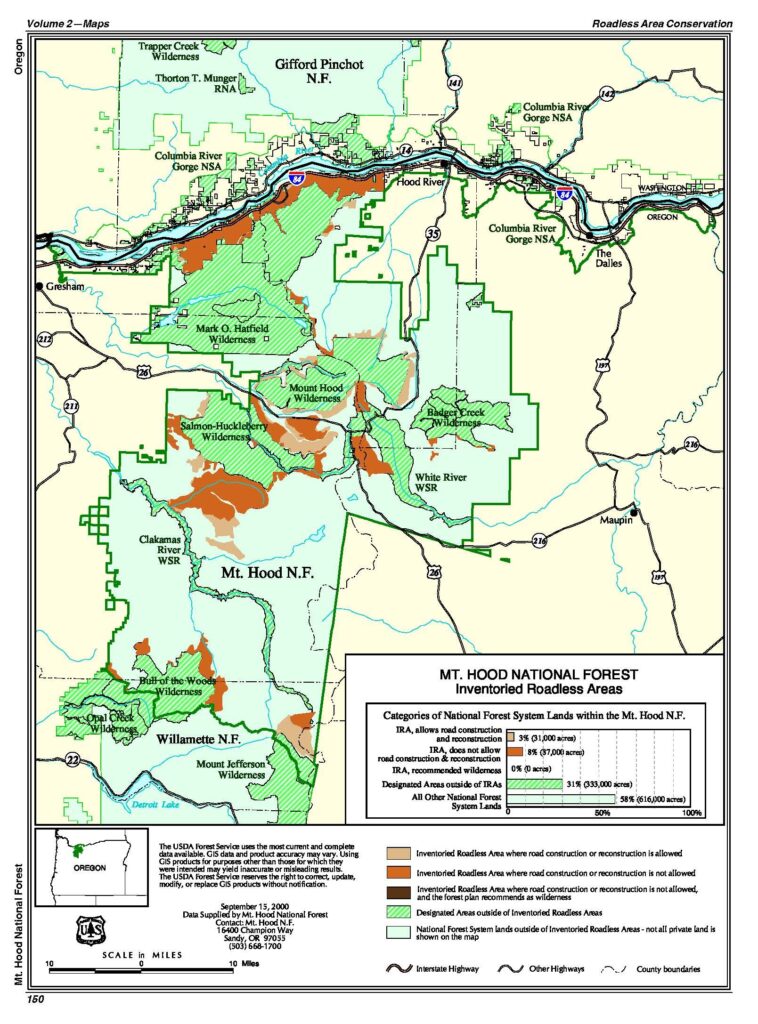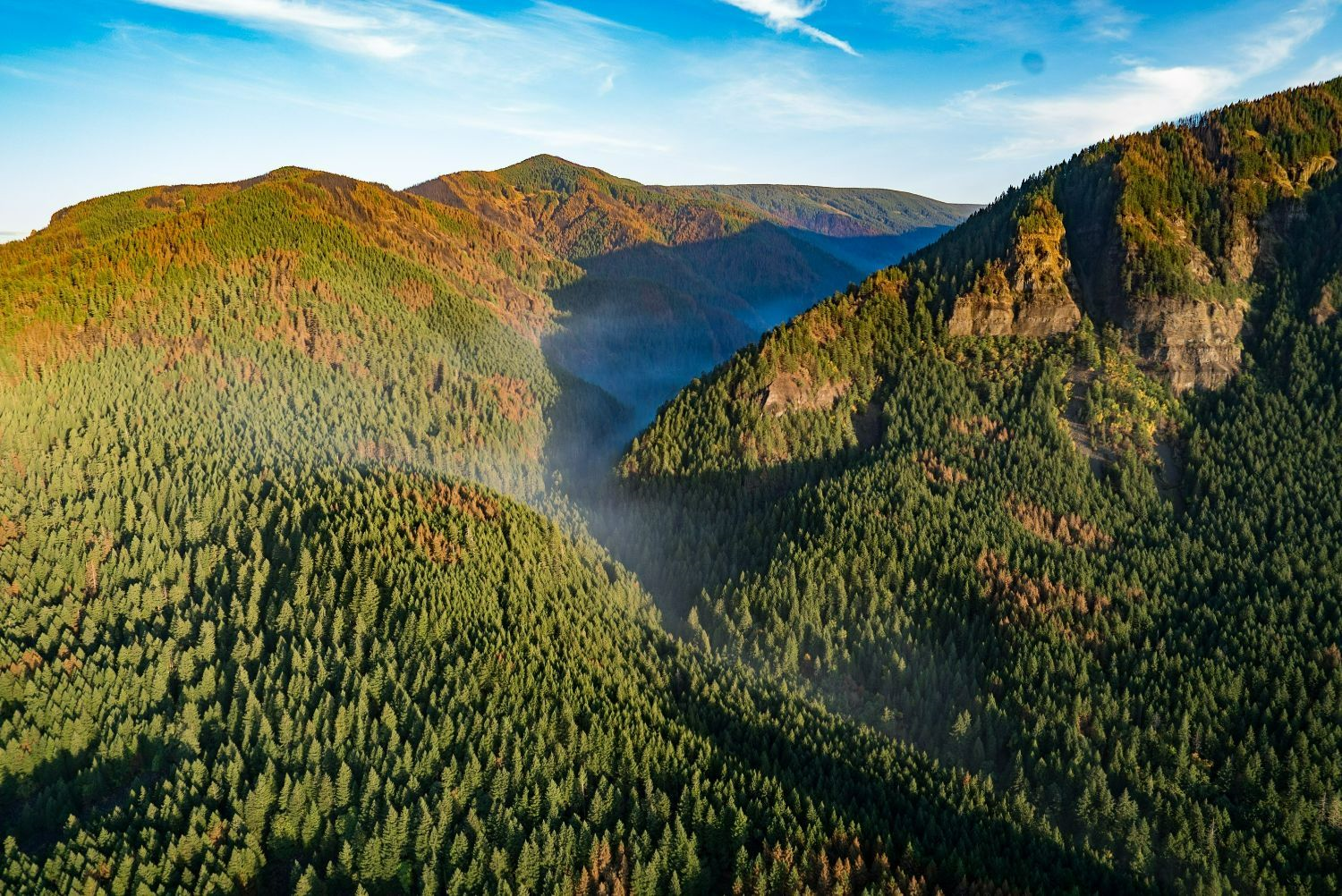Defend the Roadless Rule!
The Trump administration wants to rescind the Roadless Rule, a policy that aimed to protect the ecological integrity of Inventoried Roadless Areas across 58.5 million acres of National Forest lands. Find out how you can make your voice heard and protect our roadless areas once and for all.

Update: On August 29th, the U.S. Department of Agriculture released a Notice of Intent to rescind the popular 2001 Roadless Rule. Submit your comment here by September 19th.
On June 23, 2025, USDA Secretary Brooke Rollins announced the administration’s intention to rescind the Roadless Rule, a policy adopted in 2001 that restricted road construction, reconstruction, and timber harvesting on approximately 58.5 million acres of National Forest System lands across 39 states. Rescinding the Roadless Rule would open up these lands to road construction, logging, and industrial development, threatening the ecological integrity of some of the most pristine and ecologically important public lands in the nation.
Here in Oregon, nearly 2 million acres of our national forests would lose protection, including 118,000 acres (11%) of the most ecologically intact lands remaining in Mt. Hood National Forest. If the administration succeeds in rolling back this protection, these landscapes—and the clean water, wildlife habitat, and recreation opportunities they provide—will be put at risk.
Why Roadless Areas Matter
Roadless areas provide many social and ecological benefits, including:
- Clean Water for Communities
Roadless areas safeguard watersheds, one of the primary reasons Congress established our national forests in the first place. These intact landscapes filter and store clean drinking water for millions of people. - Wildlife Habitat and Biodiversity
Many rare and endangered plants and animals depend on the unfragmented nature of roadless areas. They act as biological strongholds, ensuring the survival of at-risk species. - Outdoor Recreation and Local Economies
Roadless areas offer unmatched opportunities for hiking, camping, hunting, climbing, paddling, mountain biking, and solitude. Nationally, they include 11,337 climbing routes, more than 1,000 whitewater runs, 43,826 miles of trail, and 20,298 mountain biking trails—as well as segments of the Pacific Crest Trail. Public lands tourism is a major economic driver for rural communities, bringing in jobs and revenue. - Natural Resilience
Roadless areas serve as buffers against invasive plant species and provide reference sites for scientific research. They also store carbon, helping to fight climate change.
When first proposed in 2001, the Roadless Rule received 1.6 million public comments—more than any rule in U.S. history at that time. Over 95% supported keeping roadless protections.
Public support remains strong today. A 2019 Pew Charitable Trusts poll found that three out of four Americans—across political affiliations and whether they live in rural or urban areas—want roadless protections to remain in place.
What this means for Mt. Hood National Forest
- Mt. Hood National Forest has 118,000 acres of Inventoried Roadless Areas, which makes up 11% of the forest. If the Roadless Rule is rescinded, these lands would be opened up to road construction and timber harvesting.
- Roadless areas safeguard the headwaters that supply water to communities across Oregon. Mt. Hood has already closed or decommissioned 400 miles of roads in municipal watersheds like Portland’s Bull Run to protect this resource.
- Over 4 million people visit Mt. Hood National Forest annually to hike, ski, camp, fish, climb, and simply enjoy the peace of nature. Rescinding the Roadless Rule would remove protections for much of this backcountry recreation, including stretches of the Pacific Crest Trail.
- New research shows wildfires are 4× more likely to start in roaded areas than in unroaded forest. Mt. Hood already has approximately 2,845 miles of roads, and building more will only raise the risk.
- Many threatened and endangered species depend on the intact nature of Mt. Hood’s roadless areas, including the Northern Spotted Owl, Red Tree Vole, and Chinook and Coho salmon. Removing protections for roadless areas would further imperil these rare and culturally important species.
The Truth about Roads and Wildfire
The USDA and timber industry claim that removing the Roadless Rule will help prevent wildfires. But the science says otherwise.
New research shows wildfires are four times more likely to start in areas with roads than in unroaded forest tracts. Building more roads fragments habitat, spreads invasive species, and increases human-caused ignitions — all of which make forests more vulnerable to fire.
How You Can Help
To repeal the Roadless Rule, the USDA must go through a formal rulemaking process—and that means you will have the chance to speak up. Here’s how you can help right now:
Submit a Public Comment
The public comment period is open from August 29th through September 19th. See our comment guide to help shape your comment, but always be sure to personalize! Unique individual comments are more impactful than copied and pasted template letters.
Submit your comment here! →
Contact Your Lawmakers
Tell your Senators and Representatives to support the Roadless Area Conservation Act of 2025, a bill sponsored by Oregon Rep. Andrea Salinas (OR-06) that would make roadless protections permanent—so only Congress, not the administration, could roll them back.
- Senator Ron Wyden
- (202) 224-5244 | Contact Form
- Senator Jeff Merkley
- (202) 224-3753 | Contact Form
- Representative Suzanne Bonamici (OR-01)
- (202) 225-0855 | Contact Form
- Representative Cliff Bentz (OR-02)
- (202) 225-6730 | Contact Form
- Representative Maxine Dexter (OR-03)
- (202) 225-4811 | Contact Form
- Representative Val Hoyle (OR-04)
- (202) 225-6416 | Contact Form
- Representative Janelle Bynum (OR-05)
- (202) 225-5711 | Contact Form
- Representative Andrea Salinas (OR-06)
- (202) 225-5643 | Contact Form
Spread the Word
Share this information with your friends, family, and networks. The more people who know what’s at stake, the stronger our defense will be.

Associated Files